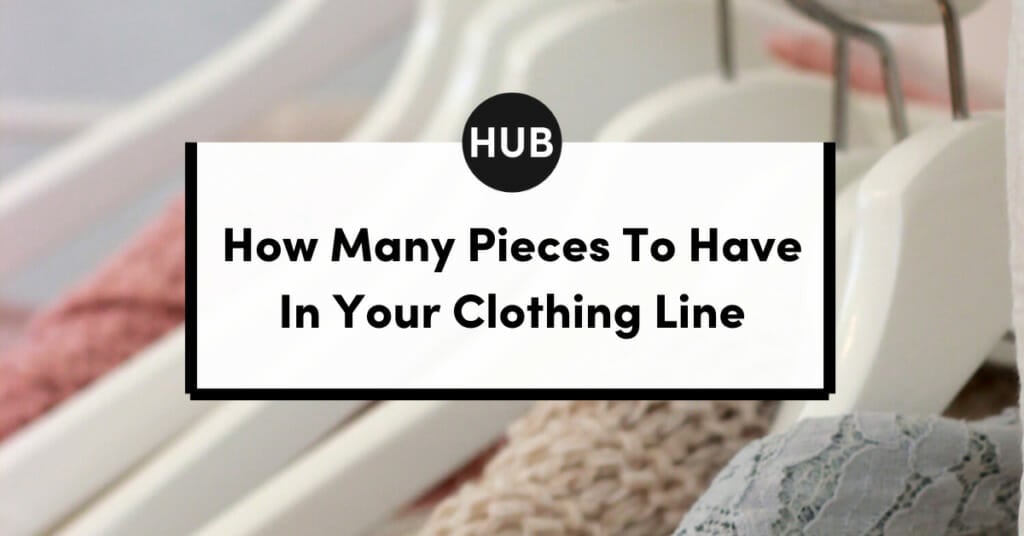As others gear up for swimsuit shopping, I get ready to buy my winter coats. Once snowy weather hits, I head out to buy swimwear, pool toys, and summer outfits. I configured my inverted shopping schedule around the discounts that accompany overstocked clothing items belonging to a soon-to-be expired season. Since fashion trends change quickly, many shop owners try to rid last season’s clothing using heavy discounts. However, if they were able to calculate how much of an item to manufacture before ordering, they’d be able to curtail this problem. So, here are a few tips to help you assess how many pieces to include in your clothing line, in any season.
1. Understand Your Market
It is important to understand your market, primarily the competitors and customers in your market. When designing a clothing line, it is important to determine your target audience at the onset. Once you’ve defined your target customer, you should research their spending patterns and lifestyle. You can base this research on competitors who share your target demographic, and let that guide you in your production process. If your customers often buy multiple styles of one item, plan accordingly. Meet their expectations without overwhelming them with too many options.
It is also beneficial to plan according to where you fall in the market. If you are a startup fashion brand, start small. Wait to see how your customers react to the first few items you put out before you spend all your money creating a full-fledged clothing line. Also, be honest with yourself: how many customers do you bring in on a daily basis? As you grow your business, you should be ready to expand the number of items you offer, but until you notice the need for that growth, don’t overshoot.
2. Selling Through Different Mediums
After determining your target audience, choose whether to sell through an e-commerce platform, through a brick-and-mortar store, or through both. If you’re selling online, you need enough items to fill up the page. Online shoppers prefer to shop from fully stocked stores, as opposed to stores with limited options. Unlike brick-and-mortar stores, online stores allow customers to peruse through an entire collection in a matter of seconds. To fill up a page, aim for at least 9 to 12 pieces.
3. What Are You Selling?
While some store owners strive to be a jack of all trades, many specialize in one particular item, such as handbags or dresses. Jewelry and accessories present well when multiple pieces are merchandised together. A table in a typical jewelry shop will feature matching necklaces, earrings, and bracelets. This enables the customer to appreciate each individual piece while also considering the pairing of each item. This might convince them to buy the items as a set. A dress, on the other hand, can be sold on its own.
4. How Many Styles Will You Have?
Often, a particular item will come in multiple styles, differing in color, size, pattern, or arrangement. Fashion Brain Academy recommends 10 to 12 styles for your first collection. As for how many items to produce within each style frame, test out the waters first. Start with an equal amount of each style and if one style gains popularity, order more of that particular style.
5. Working With Your Budget
If you are working with expense constraints, narrow your initial assortment. A few seasons might pass before you attract customers. If you deplete your financial resources on your first mix, you won’t have enough for subsequent seasons. Therefore, you should plan 2-3 months in advance to ensure you are prepared for each shopping season.
6. Minimum Order Quantity
Some factories and wholesalers have required minimums. If you want to manufacture through them, then you’ll have to produce at least the minimum. Some factories require you to produce a minimum of 100 items, others may ask for 500. If you’re looking to manufacture fewer items, check out MakersValley, where you can create your own line without having to deal with minimums.
Guest Blog Courtesy of MakersValley, an online platform that matches boutiques & designers with over 150+ Italian apparel manufacturers, with no minimum orders, no markups (pay factory price), and a dedicated account manager to guide you through the manufacturing process.
RELATED POSTS:

